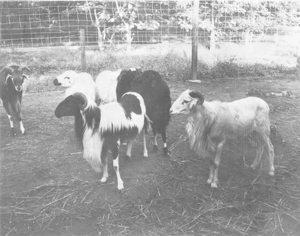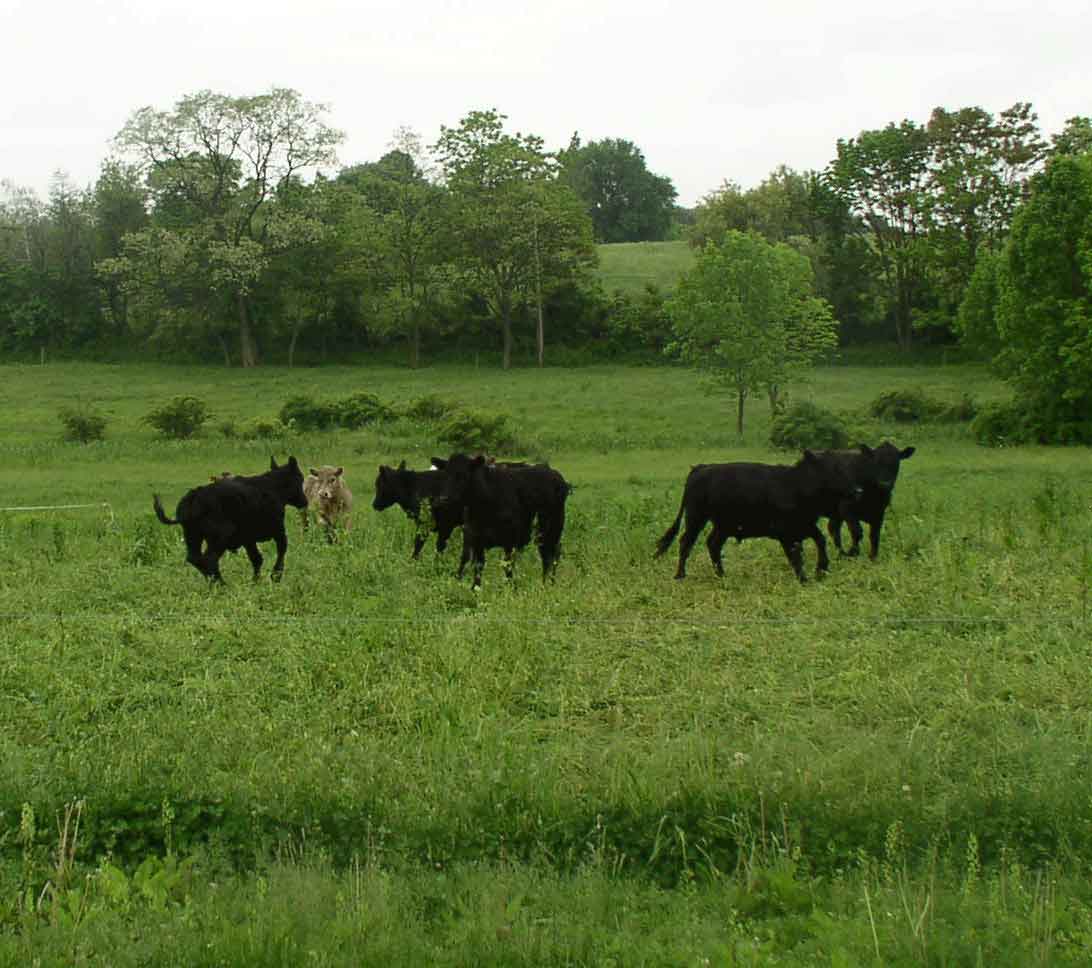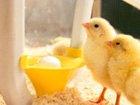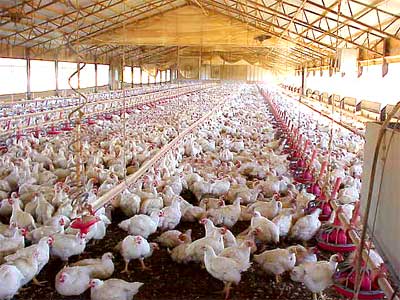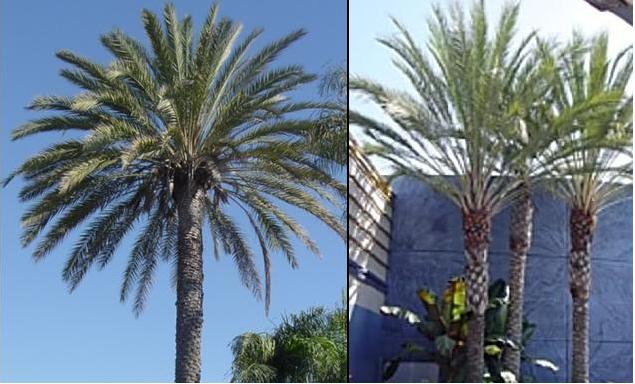Volume 1 : Issue 2 - March 2011
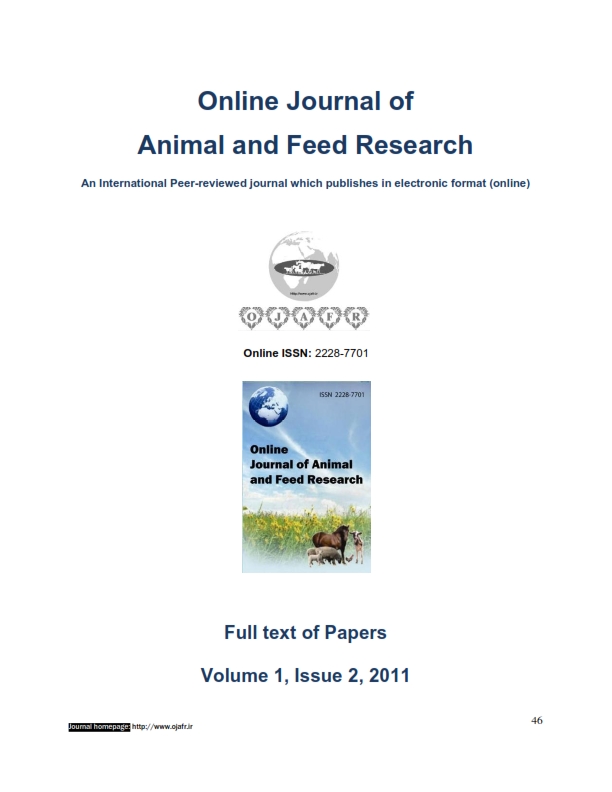
Table of Contents, 25 March 2011
| Research Title and Field Article (Abstract) |
|
Effects of whole cotton seed supplementation on carcass and meat qualities of the djallonke sheep raised on station
|
Original Research, A07 Teye, G.A., Adzitey, F., Alidu, O., Ansah, T., Addy, F., Alenyorgege, B., Naadam, J., Salah, E.K. and dei, H.K. Online J. Anim. Feed Res., 1(2): 47-51. 2011. ABSTRACT: This on-station study evaluated the effects of whole cotton seed supplementation on the carcass and meat qualities of Djallonke sheep. Twelve sheep of similar age and weight were randomly selected and supplemented with whole cotton seed (WCS) for fifteen weeks in a completely randomized design. Three treatment levels of 0 g, 200 g and 400 g were offered with four replicates. Supplementation had no adverse effect on carcass quality but significantly (P<0.001) improved juiciness and overall liking of the meat. The results suggest that whole cotton seed could be used as a supplementary feed with 200 g being enough to ensure the survival and to improve the productivity and meat quality of the Djallonke sheep. Keywords: Djallonke sheep, cotton seed, carcass |
|
|
Poisonous plants in gardens and grazing lands
|
Review, A08 Aganga, A., Nsinamwa, M., Oteng, K. and Maule, B. Online J. Anim. Feed Res., 1(2): 52–59. 2011. ABSTRACT: This paper is a review of poisonous plants, their toxic agents and the symptoms of poisoning. Poisonous plants are plants, which as a whole or part thereof under all or certain conditions and in amount likely to be taken or into contact with an organism will exert harmful effects or causes death either immediately or by reason of cumulative action of toxic property due to presence of known or unknown chemical action. There are different types of diseases caused by some poisonous plants. Poisonous plants can reduce livestock productivity depending on the effect they have and the amount consumed. Since poisonous plants are potential threats to the livestock industry it is important that farmers are carefully to avoid contamination of rations prepared for livestock and removal of poisonous plants from grazing lands. Prevention and precautions are the best way to avoid any economic loss. Keywords: Major genes, early lay traits, crossbred local chicken, humid tropics |
|
|
Impact of maternal egg size and restricted feeding regime on some growth characterizes of broilers reared under humid tropical environment
|
Original Research, A09 Oke, U.K., Ekanem, M.N. and Obike, O.N. Online J. Anim. Feed Res. 1(2): 60–66. 2011.
ABSTRACT: The experiment was conducted to investigate the effect of different egg size from which birds are hatched have on their performance in terms of their growth traits and also to examine the effect of feeding regimen on the performance of Anak Titan broilers in a CRD study. The feeding regimes were ad- libitum (AL) and restricted feeding.(RF) The growth traits measured were feed intake (FI) body weight (BW), thigh length (TL), shank length (SL), breast length (BL) and body girth (BG) fortnightly. Efficiency of production was also evaluated using weight gain, feed conversion ratio, and mortality. Result showed that the egg size may affect the growth traits in that birds in group C (63-68g) with higher initial weight out performed that of B (58-62g) and A (50-57g), in terms of final body weight and most of the other growth parameters studied although there were no significant difference (P<0.05) between these three groups.. Body weights at 9th week for birds in A, B and C groups were 1386.59g, 1426.50g and 1521.05g respectively. The feeding regimes employed significantly (p<0.05) affected the performance of the broilers of combined egg size with the ad-libitum group being significantly (p<0.05) higher in values than birds on the restricted feeding group. There was no significant difference (P>0.05) in the interaction between birds of different egg size and feeding regimes. There was a high significant (p<0.05) correlation between body weight and all other growth traits throughout the study period. It is recommended that birds with egg weight range of 63-68g with high initial body weight and subsequent high performance under ad-libitum feeding should be adopted with occasioned restricted feeding to prevent wastage. Keywords: Egg size, feeding regimes, growth traits, broiler, humid tropics |
|
|
Monitoring feed nutrient content of available commercial poultry feeds in Botswana
|
Original Research, A10 Aganga, A.A., Nobo, G. and Gopadileng, T. Online J. Anim. Feed Res., 1(2): 67-72. 2011.
ABSTRACT: Nutrient quality in a feedstuff is the concentration of that nutrient in quantities that are sufficient for normal metabolic activities of a particular animal. Hence the study was carried out to determine nutrient quality of various locally available concentrate poultry feeds in the market and compare determined feed contents with nutrient values on labels. The samples were obtained from broiler farmers in Gaborone region. Mean analysis values from manufacturer A feeds were 19.64, 3.29, 0.19 and 0.43 for starter, 16.39, 3.98, 0.11 and 0.57 for grower, and 16.94, 4.27, 0.16 and 0.48 for finisher in g/100g on dry matter basis, crude protein, fats, phosphorus and calcium respectively. Feed label stated 22, 2.5, 0.6 and 8 for starter, 20, 2.5, 0.55 and 0.8 for grower and 18, 2.5, 0.5 and 0.8 for finisher in g/100g on dry matter basis for crude protein, fats, phosphorus and calcium respectively. Grower feeds from manufacturer B contained 18.33, 2.65, 0.24 and 0.66 in g/100g as compared to feed label values of 18.0, 2.5, 0.55 and 0.7 in g/100g on dry matter basis for crude protein, fats, phosphorus and calcium respectively. Manufacturer C finisher feed also contained 18.16, 4.1, 0.17 and 0.52 in g/100g on dry matter basis for crude protein, fats, phosphorus and calcium respectively. The quantity of minerals was found to be lower in all feeds from all manufacturers with manufacturer A lower in almost all other organic nutrients (except fats) compared to values stated on feed labels. Keywords: Nutrient content, commercial poultry feed, Botswana. |
|
|
|
Original Research, A11 Selmi, H., Khaldi, Z., Tibaui, G., Ben Gara, A., Rekik, B. and Rouissi, H. Online J. Anim. Feed Res., 1(2): 73-76. 2011.
ABSTRACT: In Saharan regions, the date palm which forms the backbone of agriculture, offers a wide range of agricultural by-products, traditionally used for domestic purposes. The determination of chemical composition and nutritional value of these byproducts for rational use in feeding livestock is needed. The analysis showed that the byproducts of palm have total nitrogen content (CP), lipid (FAT) and (CB, NDF, ADF and ADL) also with a higher nutritional value close to that of straw and hay. The scrap value of dates offers a relatively high energy (0.87 UFL / kg DM) which is comparable to the concentrate feed but with relatively low levels of nitrogen or the need for supplementation or nitrogen treatment. Keywords: Food, chemical, palm oil, scrap dates, nutritional value |
|
|
Influence of dietary calcium levels on bone development in broiler breeder hens
|
Original Research, A12 Moreki, J.C., Van Der Merwe, H.J. and Hayes, J.P. Online J. Anim. Feed Res., 1(2): 77–85. 2011. Abstract: A study was conducted to determine the effects of three dietary calcium (Ca) levels on bone characteristics of 198 broiler breeder hens during the laying period. The pullets in each experimental diet were randomly divided into three treatment groups with 1.5, 2.5 and 3.5% dietary Ca (66 birds per treatment) fed from 23 to 60 weeks of age. Treatments were arranged in a 2 x 3 factorial block design (effect of 2 ages and 3 Ca levels). Three types of breeder diets containing 1.5, 2.5 and 3.5% Ca were fed from 23 to 60 weeks of age (laying period) and these include: breeder phase 1 (23 to 34 weeks), breeder phase 2 (35 to 46 weeks) and breeder phase 3 (47 to 60 weeks). The diets were isocaloric and isonitrogenous but varied only in Ca and phosphorus (P). Feed was provided in restricted amounts in accordance with the breeders’ recommendations. At 35 and 60 weeks of age, 12 birds were randomly selected from each treatment and killed by cervical dislocation and tibiae (left and right) and right humeri from each bird excised. Parameters studied were bone weight, bone length, bone midshaft width, bone breaking strength (BS), bone stress, percent bone, true cortical area and bone ash percentage. These results showed no (P>0.05) beneficial effects of feeding increased Ca levels on all bone parameters except BS. Feed intake and body weight of broiler breeder hens were lower when 1.5% Ca was included in the diet. It seems that 2.5% Ca (4 g Ca/hen/day) is adequate to stimulate feed intake and support growth of broiler breeder hens. Bone stress decreased (P<0.081) with age, indicating that the degree of bone mineralisation was greater at 35 weeks compared to 60 weeks. Keywords: Bone dimensions, bone strength, bone stress, calcium, phosphorus |
|
| < Prev | Next > |
|---|



